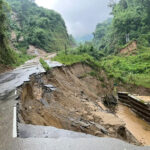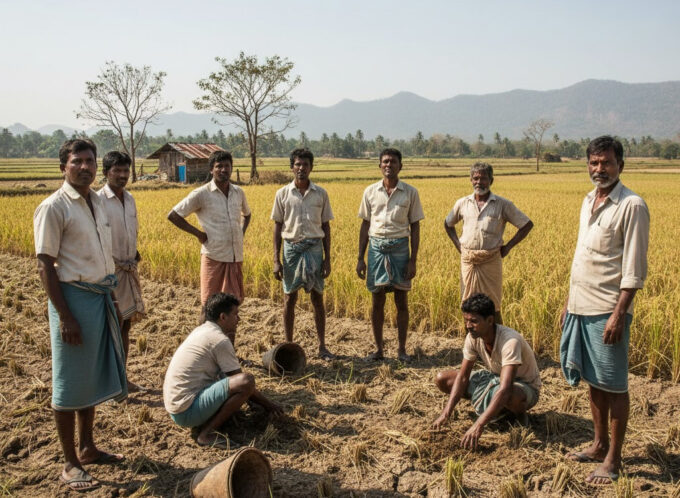The Kandy Esala Perahera has sparked a tourism surge, with Sri Lanka recording a 17.1% year-on-year rise in visitor arrivals during the first 13 days of August compared to 2024.
The iconic cultural festival has once again proven its pivotal role in attracting tourists and bolstering the nation’s economy, said a report published by the Travel and Tour World.
The report said: Sri Lanka’s tourism industry has seen record growth last year with over 1.5 million arrivals recorded around mid-August. With this strong surge, the island nation is now on track to meet its goal of 3 million visitors by year end.
The influx is in part fueled by cultural attractions such as the Kandy Esala Perahera, increased global exposure to Sri Lanka as a tourist destination and a comparative increase in arrivals from key source markets including India, UK and Italy.
Factors that have lined up to make 2013 a record year for Sri Lanka tourism.
Sri Lanka’s tourism sector is witnessing a period of remarkable growth in 2025, with over 1.5 million visitors arriving by mid-August.
This milestone, achieved two months earlier than in the previous year, highlights the country’s recovery and sustained appeal as a top travel destination.
With more than 100,000 arrivals in the first half of August, the island’s tourism continues to thrive, reflecting strong momentum and a promising future.
Reaching the 1.5 million mark is seen as a significant achievement, one that boosts confidence within Sri Lanka’s tourism industry.
The government and tourism stakeholders now have their sights set on attracting 3 million visitors by the end of 2025.
With nearly half of this goal reached within just seven months, there is optimism that Sri Lanka will meet its ambitious target.
However, maintaining this pace through the peak season will be critical in securing the industry’s success for the year.
While the figures paint a positive picture, experts caution that certain challenges could impede long-term growth. Concerns about the delay in policy changes, such as the pending free visa program, remain a point of contention. In addition, the lack of a cohesive global marketing campaign and underdeveloped infrastructure could hinder Sri Lanka’s full potential. Addressing these issues is key to sustaining growth and reaching the country’s tourism goals.
The Sri Lanka Tourism Development Authority (SLTDA) has forecasted 248,279 visitors for August 2025. If the current trend continues, this will exceed the 164,609 arrivals seen in August 2024 and surpass the all-time high of 200,359 in August 2018.
This growth highlights Sri Lanka’s appeal as a premier destination, fueled by vibrant cultural events and ongoing advancements within the tourism industry.
India continues to be the leading source of international tourists for Sri Lanka, accounting for 19,572 visitors, or 20%, during the first 13 days of August.
The United Kingdom follows with 10,970 arrivals, while Italy has made a notable leap to third place with 7,641 visitors. France (6,870) and China (6,762) round out the top five markets for the month, showing the broad international appeal of Sri Lanka.
Looking at the year-to-date statistics, India leads with 298,694 arrivals, followed by the United Kingdom (142,347), Russia (117,322), Germany (91,021), and China (85,531).
These numbers reflect the strong demand for Sri Lanka from a variety of international markets, underlining the island’s wide-reaching appeal.
The increase in arrivals also mirrors the growing diversity of tourists visiting Sri Lanka.
While the country is still known for its stunning beaches, there is an increasing interest in cultural and adventure tourism.
Visitors are discovering Sri Lanka’s diverse cultural heritage, abundant wildlife, and stunning landscapes, enhancing the island’s appeal to a broader spectrum of travelers in search of unique and enriching experiences.
However, Sri Lanka must continue to address several key challenges to sustain growth in the tourism sector.
Experts emphasize the need for more substantial investments in infrastructure, particularly in transport and accommodation, to support the growing number of visitors.
Additionally, a more proactive global marketing strategy is necessary to highlight Sri Lanka’s unique offerings and attract new travelers from emerging markets.
As Sri Lanka moves forward, adapting to global tourism trends will be essential. The upcoming peak season will play a critical role in determining whether the country can meet its tourism targets for 2025.
Successfully addressing policy gaps, implementing necessary reforms, and continuing to enhance Sri Lanka’s global appeal will be fundamental in securing the tourism sector’s long-term growth.
Tourism plays a crucial role in Sri Lanka’s economic landscape, driving job creation, boosting foreign exchange revenue, and fostering infrastructure growth.
The recent growth in visitor arrivals offers hope for economic recovery and long-term prosperity.
With targeted investments, a focus on sustainable tourism practices, and policy reforms, Sri Lanka is well-positioned to strengthen its position as a leading global destination.
Sri Lanka’s tourism has exceeded 1.5 million arrivals by mid-August, positioning the country to meet its target of 3 million visitors in 2025, driven by key cultural events and growing global demand.
The tourism industry is enjoying a period of substantial growth in 2025, with the 1.5 million milestone being achieved well ahead of schedule.
This achievement is a testament to the sector’s resilience and potential.
While challenges remain, the right combination of infrastructure improvements, policy changes, and strategic marketing will help Sri Lanka reach its tourism goals and secure a prosperous future for the industry.











Leave a comment